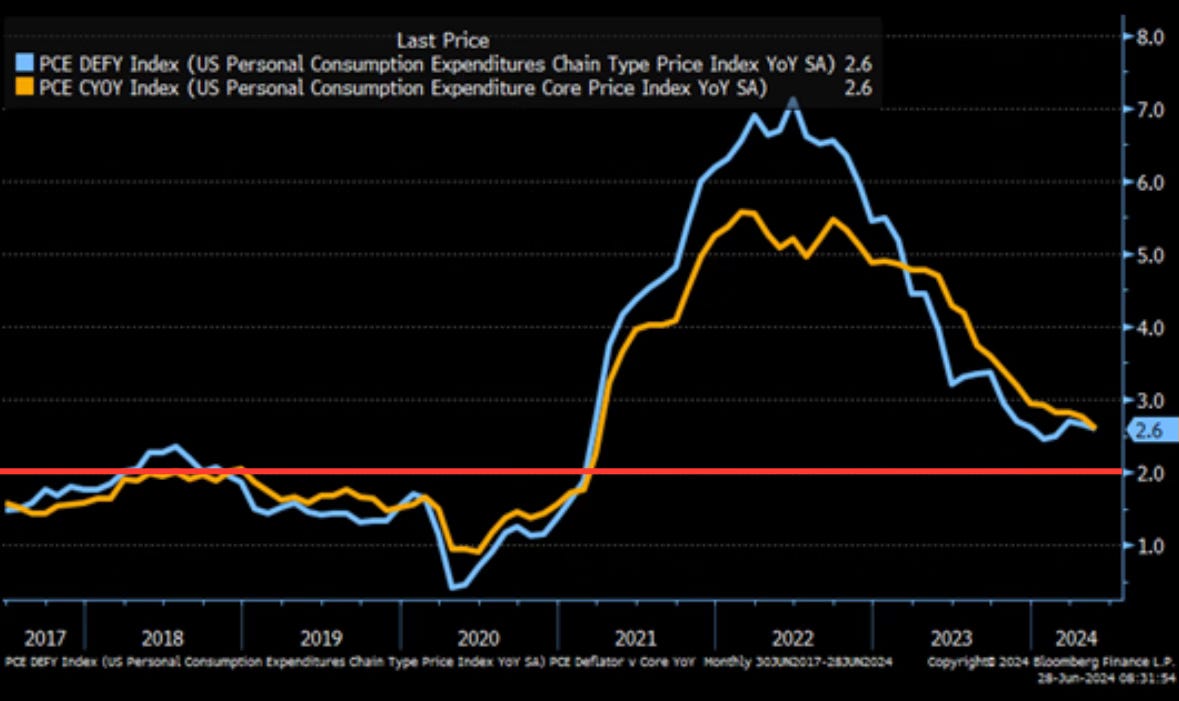Inflation Has The Middle Class Movin’ Out
You oughta know by now / You can pay Uncle Sam with the overtime
This week’s economic data reveals a troubling picture of the U.S. economy, despite headlines suggesting a mild improvement in inflation rates. The reality is that the compounding effects of persistent inflation over the past three years are now manifesting in various critical sectors, impacting consumers and businesses alike. This week’s analysis explores key economic indicators and their implications, drawing a parallel to the sentiments expressed in Billy Joel’s “Movin’ Out” as the American Dream and materialism fade. The song critiques the traditional American Dream, suggesting that the pursuit of material wealth and status symbols (like a house in Hackensack or a Cadillac) often leads to dissatisfaction and stress.
Inflation: A Persistent Challenge
The Personal Consumption Expenditures (PCE) inflation rate and core inflation both came in at 2.6%, aligning with Wall Street expectations and approaching the Federal Reserve’s 2% target. However, this seemingly positive development belies a more troubling reality. The compounding nature of inflation, which has risen by 20% over the past three years, is exerting significant pressure on American households.
Housing and utilities costs have surged by almost 6% year-over-year, while services and shelter costs are up nearly 4%. These are essential expenses that cannot be avoided, forcing Americans to cut back on non-essential items like durable goods. This trend is evident in the 3% decline in prices for durable goods over the past year, reflecting decreased consumer demand as people prioritize daily necessities. As Billy Joel might put it, “You oughta know by now, you can pay Uncle Sam with the overtime,” but when essentials eat up the budget, there’s little left for anything else.
Consumer Sentiment: Declining Confidence
The University of Michigan’s Consumer Sentiment Index dropped to 68.2 in June, down from 69.6 in May, indicating a decline in confidence among consumers. This decrease is particularly notable in the assessment of current economic conditions, which fell to 65.9 from 69.6. Despite inflation nearing the Fed’s target, the prolonged period of high prices has left 45% of consumers blaming high costs for their poor financial health.
This sentiment echoes the lyrics, “Mama Leone left a note on the door, she said, ‘Sonny, move out to the country,’ workin’ too hard can give you a heart attack.” Americans are feeling the strain of working harder for diminishing returns, and the impact is evident in their spending behaviors and overall economic outlook.
Corporate Struggles: Nike, General Mills, and Walgreens
(To continue reading the analysis on these stocks, the recent record low pending home sales, and a detailed breakdown of Micron’s AI earnings bust this quarter, consider becoming a paid subscriber.)
Keep reading with a 7-day free trial
Subscribe to The Coastal Journal to keep reading this post and get 7 days of free access to the full post archives.






